Where might you go for exposure to copper, gold, silver and uranium with one trade?
That 70's show continues...
We have all been told that inflation is well and truly beaten.
Among commodities, copper, gold, silver, uranium, and oil, did not get that memo.
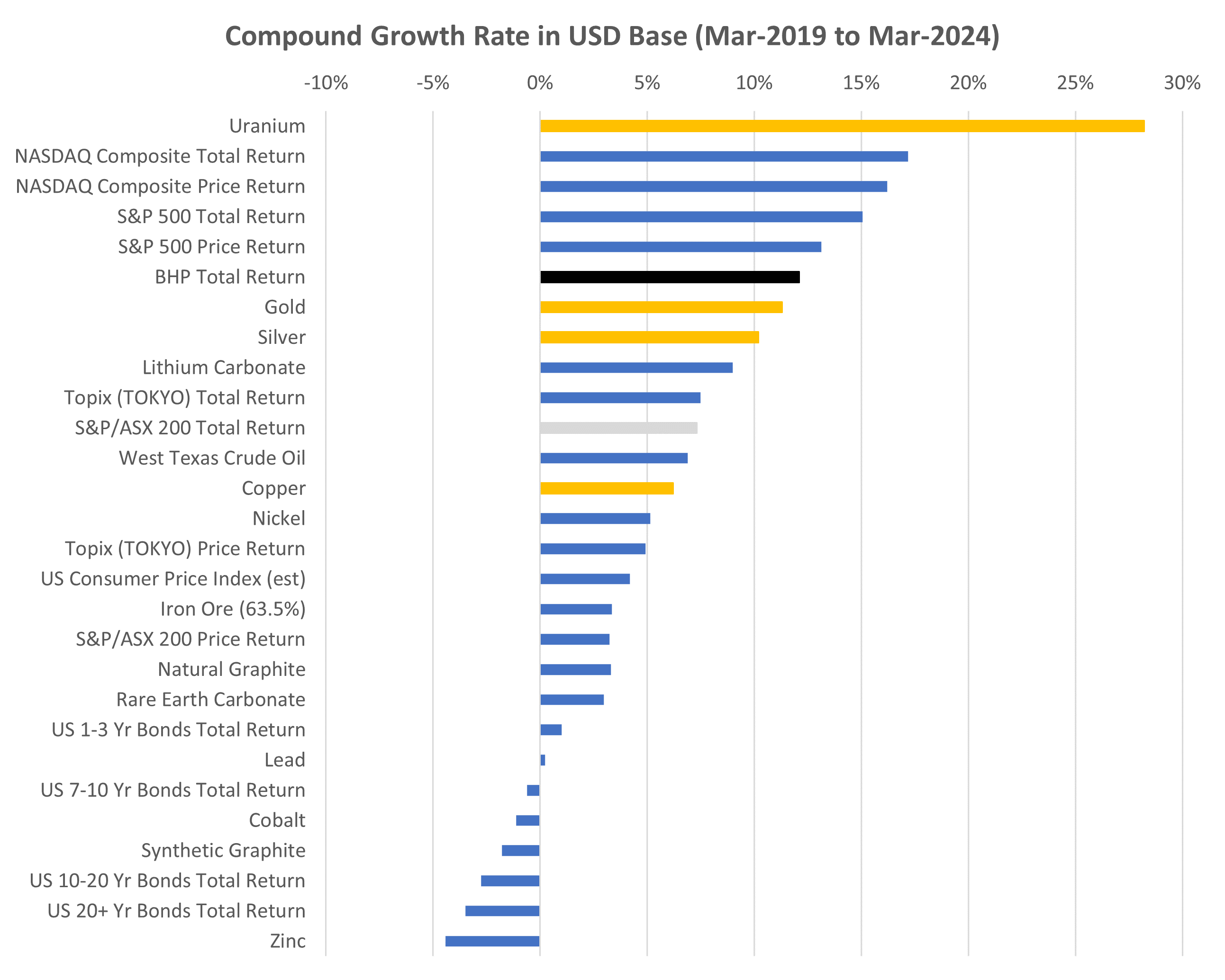
The story of inflation over the period from Mar-2019 through Mar-2024 is one where iron ore handsomely beat the total return on US bonds but lagged the US CPI.
Over five years copper, gold, silver, uranium, and oil, beat the US CPI.
On the ASX, BHP Group ASX: BHP had a great position in all five commodities before their spin-out of the Gulf of Mexico oil assets to Woodside Energy ASX: WDS.
BHP offers exposure to four out of five in just one trade.
As you can see, the USD total return for holding BHP lagged the US stock indices, but beat gold, silver, the TOPIX index in Japan, and the S&P/ASX 200 Index in Australia.
Let's have a close look at the jewel in the crown for BHP Group.
This is the mine they forgot to say much about in their last annual report.
That mine is Olympic Dam, in South Australia.
Why is Olympic Dam so interesting?
There is a large number of nuclear reactors under construction.
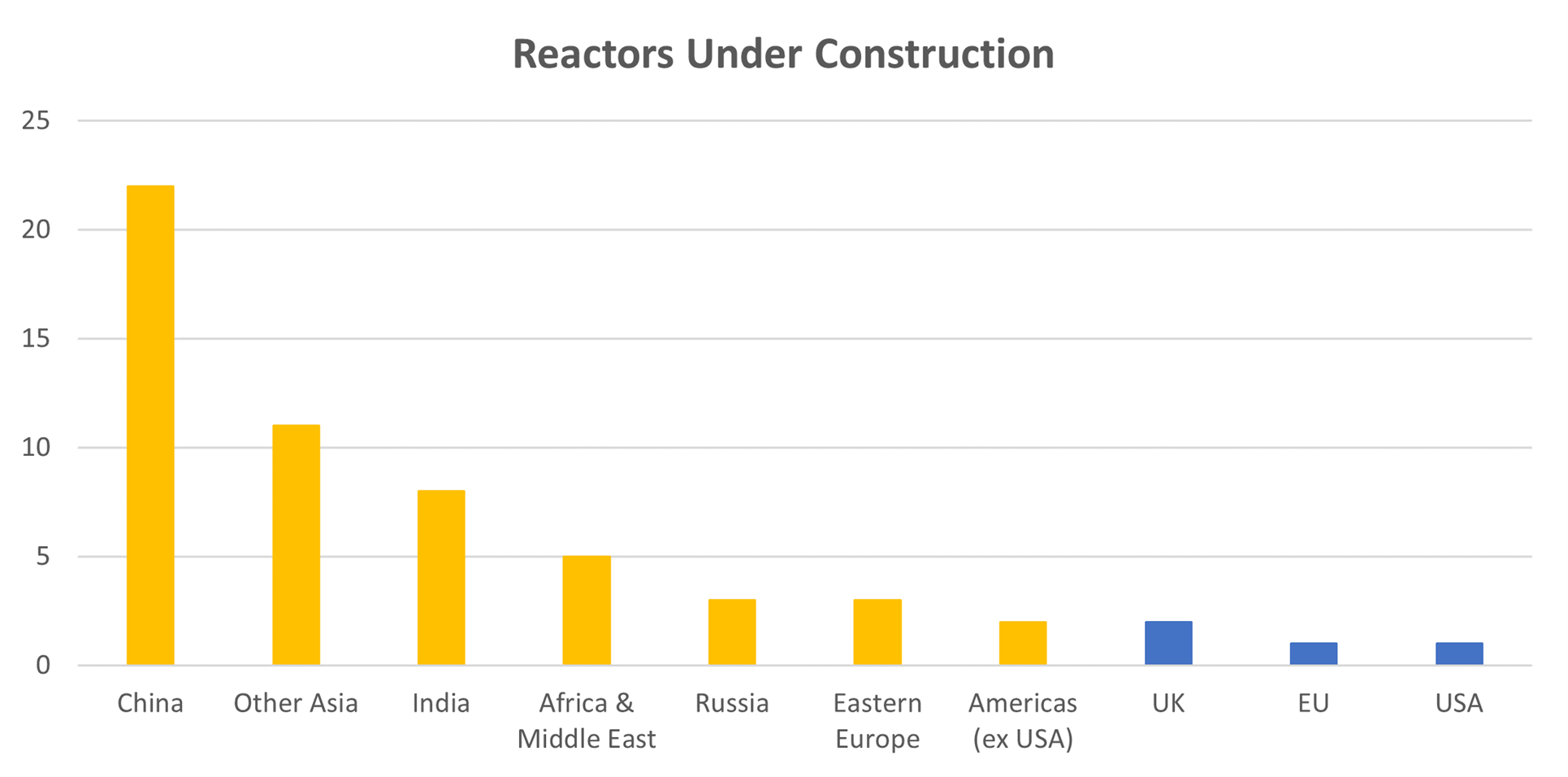
China started ramping up their civilian nuclear industry as part of a range of solutions to the energy transition. Unlike most nations, which first debated climate change, and which path to choose, China pursued them all: hydroelectricity, solar photovoltaics, wind energy, super-critical coal, battery storage, pumped storage, and nuclear reactors.
India is a similar story, growing faster, but at an earlier level of development.
The need to refuel Western nuclear reactors has also boosted demand.
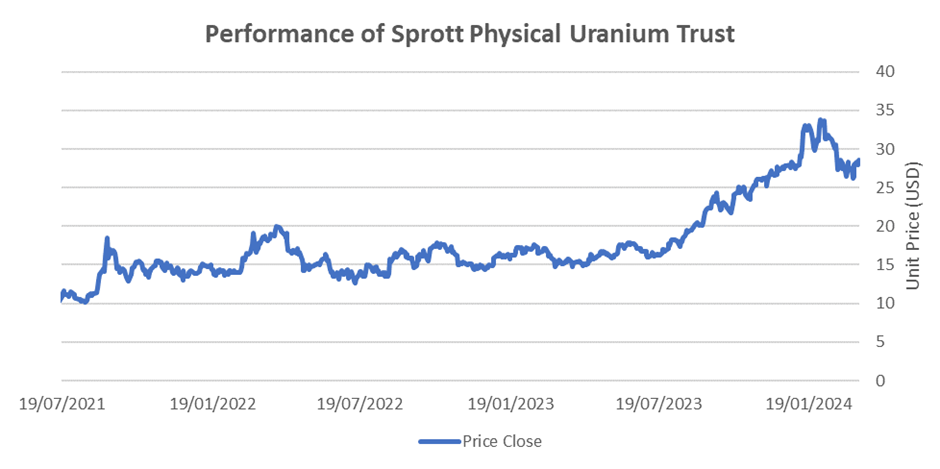
The Sprott Physical Uranium Trust is well up over a year. Source: LSEG.
The much anticipated “great refueling” frenzy has arrived. This is before all those new Chinese and Indian reactors come online and need to be stocked.
Copper is also performing better after growing anxiety about a supply squeeze.
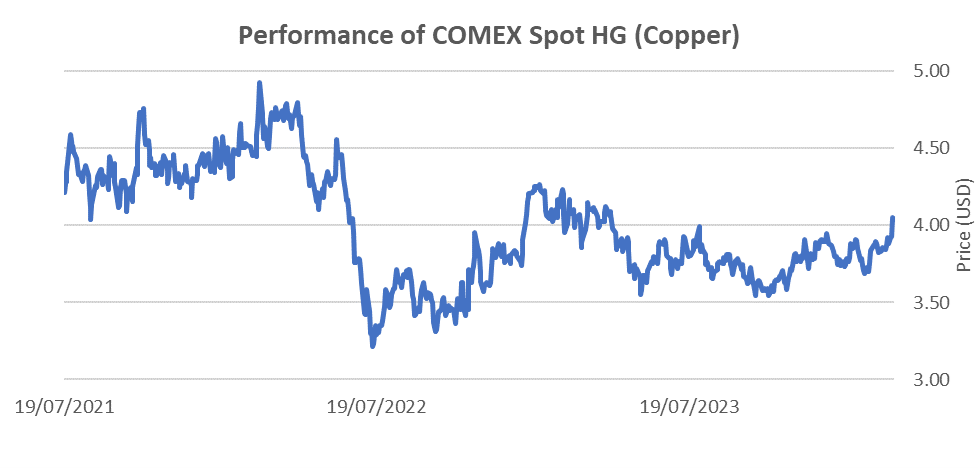
Copper is hitting supply constraints following the Cobre Panama closure. Source: LSEG.
First Quantum had to close the Cobre Panama mine in Panama after an adverse Supreme Court ruling on domestic complaints of poor environmental practices. There have also been power shortages in Zambia that put copper smelting capacity at risk.
Electricity is the major input to electrowinning in a copper refinery.
Over in China, the smelters are talking about reducing output to help firm their profit margins. There is much new refining capacity, but margins went to zero.
Chinese smelters need higher prices to remain economic.
China needs copper for the green transition and for a huge backlog of building completions. The new starts are down precipitously, due to the real estate crisis. This causes demand for steel to be softer. You use that for foundations and framing. However, copper is used late in the construction cycle, when the plumbing, gas fitting and wiring goes into the building.
Paradoxically, China is now heavily weighted to completions over new starts.
That is great for copper, and we expect the bullish tone of this market to strengthen.
When you look at global uranium production, it is highly concentrated.
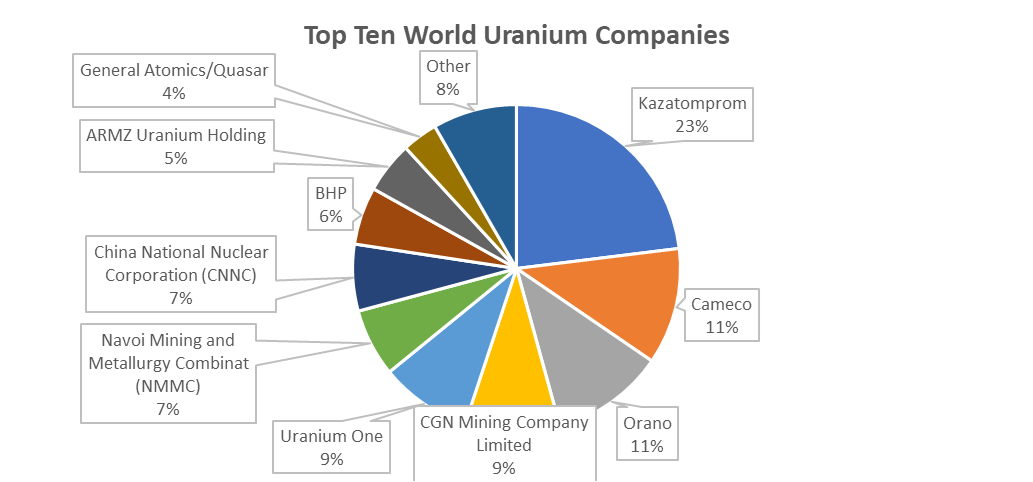
The global uranium production industry is very concentrated. Source: World Nuclear Organization.
BHP Group does not emphasize uranium much in their reporting, but it is top ten producer with 5-10% of the market. This all comes from the underground mine at Olympic Dam.
When you look at global copper, the USA and Australia are now well down the list.
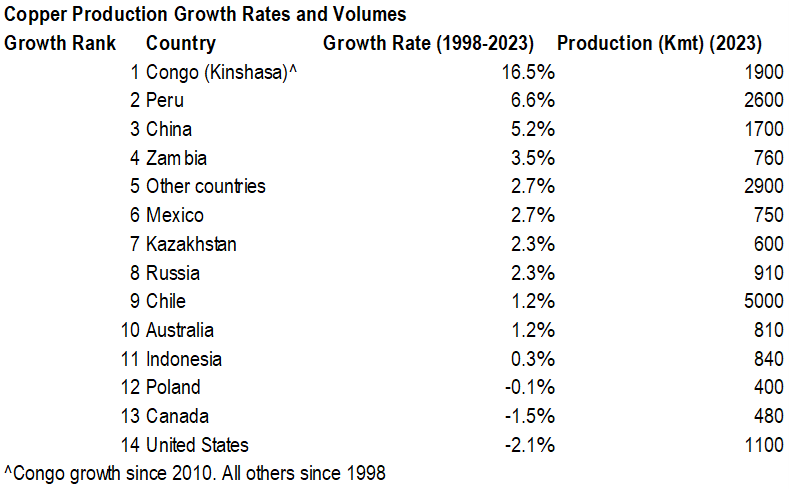
6 Australia is down the rankings for growth but has some good mines. Source: USGS.
Growth has been very poor in the USA due to permitting challenges. There is plenty of copper in the United States, but the opposition to mining is intense.
The BHP Group-Rio Tinto copper project in Arizona has been stalled for twenty years. There are several huge copper porphyry projects in Alaska that are also in limbo.
In Australia, the position is not great but there remains huge potential.
Interest in critical minerals has focused investor minds on large projects that might help offset Chinese supply-chain dominance.
China has about 45% market share of global copper smelting. I have no quarrel with China in doing so much copper smelting, as most of the product is consumed by them. However, it would be prudent to build up Australian, Japanese and USA based smelting operations.
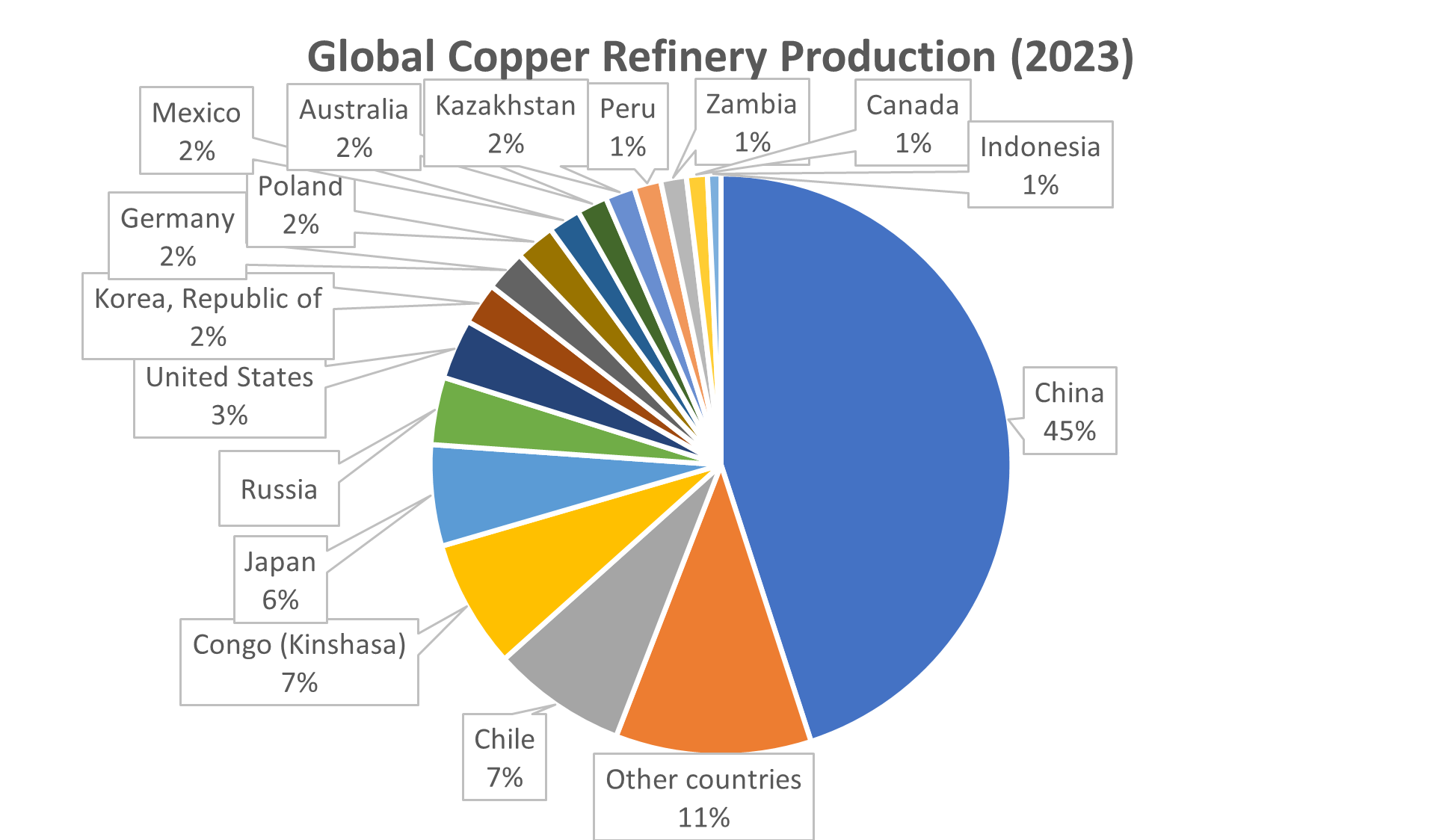
Smelters are pretty ugly and use a lot of electricity. They can be managed to environmentally responsible standards, although that is more costly. There are new build smelters in the DRC that may not be as high in standards, although that is not a given if the technology is good.
China is getting better and better at minerals processing and smelting as their own economy grows and the government tries to reduce the environmental damage from mining.
This is a global trend, and one that Australia is part of also.
The good thing about Olympic Dam is that there is already an operating smelter complex that uses a complex flow sheer to separate out the copper, uranium, gold and silver in the ore.
The Olympic Dam ore body is pretty incredible.
You can look up the details on SARIG, under Deposit Number 3000.
Here is what you get in this giant IOCG deposit:
Resource 2018 10,727Mt @ 0.72%Cu, 230g/t U3O8, 1.28g/t Ag, 0.30g/t Au.
Those grades are not high, but the deposit is huge.
There is also 24% Iron in low-grade iron ore and 5,000 ppm of disseminated rare earth (REE). Neither of these can be economically extracted, but the rare earths do wind up in the tailings.
One day, it may be economic to reprocess them.
The case for BHP Group
The market seems to have forgotten that around 30% of BHP Group revenues come from copper. They own 57.5% of the huge Escondida copper-porphyry mine in Chile, 100 % of Olympic Dam, along with Prominent Hill and the recently acquired Carapateena mine.
Uranium has not been a popular story among the ESG-focused institutions.
Olympic Dam is the largest known uranium deposit on earth.
The reserves are around 261,000 times, or one hundred times current production, in a resource of 2.1M tonnes. The grade is low at 0.05%, but the orebody is polymetallic.
The revenue split includes copper (70%), uranium (25%), gold and silver (5%).
The contained rare earths, while now going to tailings, represent the largest known deposit of rare earths in Australia. The resource is huge, and at 5,000 ppm, not insignificant.
There are many rare earth clay-hosted projects in Australia with lower grades. These regolith hosted REE projects also have challenging extraction economics.
Realistically, the REE will likely stay in the tailings.
Olympic Dam and the emerging copper precinct that BHP Group intends to build in South Australia, is a cornerstone asset for building an Australian processing industry.
The size of Olympic Dam can well support the training of an entire new generation of polymetallic ore-body specialists. The flow sheets are complex and challenging.
Whomever cuts their teeth on these mines in South Australia will go on to many more exciting projects of this type across Australia. That is a worthy national development goal.
Fortunately, this is where Australian government officials and I agree.
Historically, the big obstacle to expanding Olympic Dam has been the availability of water. The availability of renewable energy powered desalination can change this. The Northern Water Supply Project (NWSP) is designed to address the water problem.
I can be critical of government, but expanding Olympic Dam is a good idea.
I have no quarrel with any government minister who drives this forward.
I might even send flowers and a box of chocolates.
Conclusion
BHP Group ASX: BHP is the only company in the world that is a top-ten global copper miner as well as a top-ten global uranium producer.
The source of the uranium, and a good chunk of the copper, as well as gold and silver byproducts is Olympic Dam in South Australia.
The energy transition needs copper for electrification and uranium for low-carbon nuclear fuel.
Olympic Dam is your one-stop shop for copper, gold, silver, and uranium.
Government spending on big infrastructure projects looks set to rise.
The stars are aligning for Olympic Dam to expand production.
This is a one-hundred-year ore body with challenging flow sheets.
BHP Group, the state and federal governments, and you my dear reader, ought to invest for the future in growing Australia's premiere complex minerals processing project.
Olympic Dam will emerge, in the public eye, as a truly strategic asset.
Olympic Dam is here. It is ours. We control it.
Deng
Xiaoping famously said:
The Middle East has oil, China has rare earths.
in relation to the giant polymetallic orebody at Bayan Obo, in Inner Mongolia, PRC.
That is true but Australia has Olympic Dam.
If Australia wants nuclear submarines it is going to have to get its hands dirty with uranium. Furthermore, South Australia is where that action will take place.
At some point, BHP Group CEO Mike Henry will get around to telling this story.
I got in ahead of him, so I could buy the stock on weakness.
Picture credit: Olympic Dam (BHP Group).
5 topics
2 stocks mentioned

